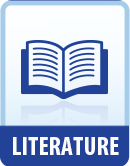|
This section contains 574 words (approx. 2 pages at 400 words per page) |

|
Realism
Realism became a popular form of painting, especially in works by Gustave Courbet, and literature in the mid nineteenth century. Writers involved in this movement, such as Gustave Flaubert, turned away from what they considered the artificiality of romanticism to a focus on the occurrences of everyday, contemporary life. They rejected the idealism and celebration of the imagination typical of romantic novels and instead took a serious look at believable characters and their often problematic interactions with society. To accomplish this goal, realist novelists focused on the commonplace and eliminated the unlikely coincidences and excessive emotionalism of romantic novelists.
The realist movement in America included a conscious turning away from the structure and content of the works of the American Renaissance. Writers like Samuel Clemens discarded the traditional optimism and idealism of Thoreau and Emerson and the romantic forms and subject matter of Hawthorne and Poe. Instead...
|
This section contains 574 words (approx. 2 pages at 400 words per page) |

|




